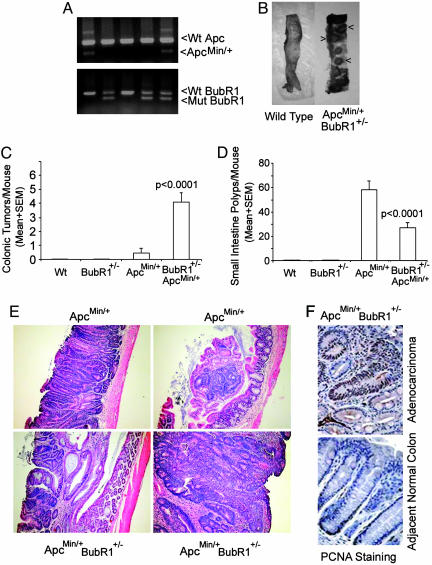Fig. 1.
Haploinsufficiency of BubR1 and Apc results in an increased formation of colonic tumor polyps. (A) Genomic DNA samples isolated from mouse tails were subjected to genotyping by PCR using primers that detect both WT (Wt) and mutant alleles of Apc or BubR1. (B) Dissection micrographs of representative colons from WT and BubR1+/–ApcMin/+ mice at 3 mo of age. Arrows denote the colonic tumor masses. (C and D) Mice of various genotypes at 3 mo of age were killed. Intestines from each mouse were examined under a dissection microscope for tumor polyps. Average numbers of tumor masses in colon (C) and the small intestine (D) from WT, BubR1+/–, ApcMin/+, and BubR1+/–ApcMin/+ mice are shown. No visible intestinal tumor masses were detected in WT or BubR1+/– mice. (E) Hematoxylin/eosin-stained sections of tumor masses from ApcMin/+ (Upper) and BubR1+/–ApcMin/+ (Lower) mice. (×400.) (F) Sections of colonic tumors from BubR1+/–ApcMin/+ mice were subjected to immunohistochemical studies after staining with IgGs to proliferating cell nuclear antigen. (×400.) Typical malignant tissues (Upper) and normal colon tissues adjacent to the adenocarcinomas (Lower) are presented.

